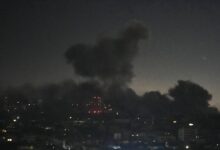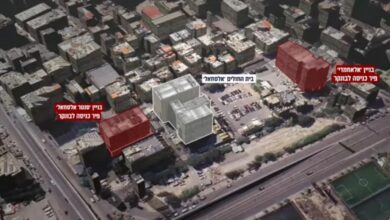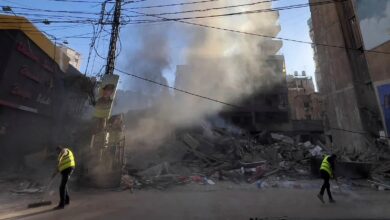Iranian Drones Could Increase The Military’s Lethality In Ukraine

- The Shahed-191 and Shahed-129 unmanned combat aerial vehicles (UCAVs), which are said to have participated in battle in Iraq and Syria, were evaluated by the Russian delegation.
- Iranian drones have the potential to support the Russian military in waging Vladimir Putin's campaign of imperial retaliation against Ukraine.
The Russian military has come up short in a number of areas during the course of its invasion of Ukraine, most notably when it comes to unmanned aerial vehicles. However, the White House claims that Russian President Vladimir Putin has a strategy to make up for that deficiency by buying “up to several hundred UAVs” from Iran.
Although it might seem like a strange idea, Iran has a thriving drone sector and its goods have been used in Middle Eastern war tests. These Iranian drones could provide Russia with other ways to assault Ukrainian forces, possibly even involving Western-donated weapons, as well as assist the Russian military in locating targets for its massive stockpile of artillery.
By equipping Kyiv with more air defence and electronic warfare devices, the West should arm Ukrainian soldiers. The suspected sale of drones also serves as further evidence that Washington and its allies should work to reinstate the now-expired UN arms embargo against Iran and impose sanctions on all parties engaged in the UAV trade.
Iran has looked to Russia since the conclusion of the Cold War to rebuild and modernise its military following a disastrous war against the neighbouring Iraq in the 1980s. But with drones, it’s a very different situation.
The Russian Federation mostly disregarded such capabilities and is now attempting to catch up with the Islamic Republic, which started investing heavily in its drone programme in the 1980s. Since then, Tehran has become a regional drone power, fielding numerous different systems and supplying drones and related technologies to proxies terror organisations all across the Middle East. Even a drone factory was apparently inaugurated by Iran in May in Tajikistan.
Iranian drone proliferation now seems to be headed for Europe. National Security Advisor Jake Sullivan stated on July 12 that US intelligence believes Tehran “is ready to furnish Russia with up to several hundred UAVs, including weapons-capable UAVs, on an expedited timeframe.
” Although the White House claimed on Tuesday that it had seen “no indicators” that the drones had yet been delivered or purchased, he claimed Iran would start training “Russian personnel to utilise these UAVs as soon as early July.” Despite Tehran’s denial of Sullivan’s charge, an Iranian military official stated in 2019 that Moscow had shown interest in buying Iranian drones, and this week Russian media reported that a different Iranian military officer said Tehran is prepared to export UAVs to “friendly countries.”
A Russian team reportedly paid two visits to Iran’s Kashan Airfield, which has functioned as Tehran’s primary base for UAV training for various Middle Eastern terror groups, once in June and once more on July 5. The Shahed-191 and Shahed-129 unmanned combat aerial vehicles (UCAVs), which are said to have participated in battle in Iraq and Syria, were evaluated by the Russian delegation.
Russian Orion UCAV production has only lately started to reach the field, which limits the influence of the system on the battlefield. Russia would gain more capability from the Shahed-191 and Shahed-129, both of which are capable of transporting Sadid precision-guided bombs.
These or other Iranian UCAVs could be used by Russia for air interdiction and close air support missions. The loss of these drones would be less expensive even though they would be threatened by Ukrainian air defences that have limited Russia’s manned fixed-wing and rotary-wing aircraft.
They might also assist make up for Russia’s lack of manned aircraft capable of dropping precision-guided weapons, which limits the Russian Air Force’s capacity to conduct efficient air interdiction and close air support. Ukrainian HIMARS rocket artillery batteries, which have recently wreaked havoc on Russian ammo stores, command centres, and other high-value targets, are apparently afraid that Russia may utilise Iranian drones to target them.
Iran possesses a range of unarmed unmanned aerial vehicles (UAVs) in addition to unmanned combat air vehicles (UCAVs), which might give Russia more capacity and — depending on the system offered — capability for intelligence, surveillance, and reconnaissance (ISR). For the “reconnaissance-fire and reconnaissance-strike contours” (or death chains linking sensors, command, control, and communication systems, and shooters), as Moscow refers to them, drone ISR is crucial.
Russian drone ISR, which was glaringly absent in the early stages of the battle, has improved the Russian military’s efficacy in the second phase of the conflict, when Russian forces have made better use of its current unmanned capabilities. According to Ukrainian forces, it often takes Russian artillery just three to five minutes to deliver accurate fire after acquiring a target through UAV, as opposed to around 30 minutes when relying on other target collection methods.
However, Russian combat correspondents and military bloggers have bemoaned the fact that “Russia is likely experiencing a shortage of competent reconnaissance UAVs for this role,” as the UK defence ministry stated in May. ISR drone losses have been considerable for Russian forces, especially for the system’s workhorse Orlan-10s. Western sanctions that limit Russia’s access to high-tech components may make this problem worse by limiting Russia’s ability to produce. Both sides have resorted to crowdsourcing for smaller, short-range ISR drones in the meanwhile.
The Shahed-136, a delta-wing kamikaze drone that Iran used this summer to attack a tanker off the coast of Oman and murder two people, is just one of Tehran’s numerous single-use attack drones. Although Russia has used its young arsenal of loitering weapons in Ukraine, capacity issues are probably present as well.
Iranian loitering weapons like the Toofan and Raad-85, which hover over the battlefield before swooping down on their targets, could provide Russian forces more lethality but will swiftly run out of ammunition.Additionally, Tehran asserts to have operational anti-radiation drones that are built to target the radar emissions of air defence systems. These models might aid the Russian Air Force in making up for its shortcomings in the destruction and suppression of hostile air defences, thus lessening the threat to manned Russian aircraft.
Additionally, Russia may utilise Iranian drones like the Qasef-1/2k and Samad 2/3, which are essentially cruise missiles with propellers, to strike targets like infrastructure and ammunition stores behind the front lines. Although these drones have smaller warheads than conventional cruise missiles like the Russian Kalibr, instances like the Iranian drone and cruise missile attack in 2019 that caused the production of Saudi Arabia’s oil to be reduced by about half demonstrate their potential significance. Such devices might support Russia’s decreasing cruise missile stocks in Ukraine.
Washington and its partners should discuss with Kiev how to assist Ukrainian military in thwarting these Iranian drones. For instance, they ought to consider giving Ukraine more electronic warfare gear. Additionally, they may strengthen Ukraine’s short-range air defences by supplying Western or additional Soviet-made systems like Avenger or M-SHORAD.
Tehran’s prospective supply of drones has direct ramifications for Ukraine, but it also highlights the necessity of reinstating and upholding the UN’s arms embargo against Iran, which expired in 2020. This problem is especially important since Tehran can ask Moscow to repay the favour by providing Iran with cutting-edge weapons like the S-400 surface-to-air missile system. Moscow has already turned down Tehran’s request to purchase S-400s, but has left the possibility open.
If Washington is also willing to void the UN Security Council resolution enshrining the 2015 nuclear deal, it may unilaterally “snap back” UN sanctions against Iran, including the arms embargo. Building on current congressional and executive branch efforts to punish Tehran’s drone programme, Washington should also continue to draw attention to this issue by penalising any people or organisations engaged in the drones’ prospective sale, supply, or transfer to Russia.
Iranian drones have the potential to support the Russian military in waging Vladimir Putin’s campaign of imperial retaliation against Ukraine. The United States and its allies can assist Ukraine in combating Iranian drones on the battlefield and address the expanding range of Iranian drone proliferation by providing military support along with diplomatic and economic pressure.







Facebook Comments